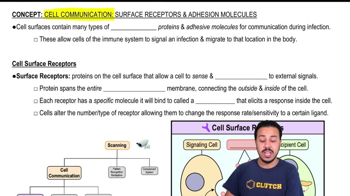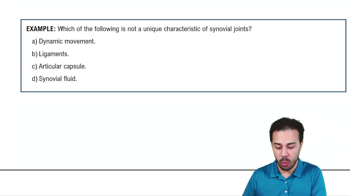Here are the essential concepts you must grasp in order to answer the question correctly.
Articular Surfaces
The shape of the articular surfaces refers to the contours and configurations of the bones that form a synovial joint. These surfaces can be convex, concave, or flat, and their compatibility affects how well the bones fit together, influencing joint stability. For example, a ball-and-socket joint allows for a greater range of motion but may be less stable than a hinge joint, which has a more restricted movement.
Recommended video:
Reinforcing Ligaments
Reinforcing ligaments are strong bands of connective tissue that connect bones at a joint, providing stability and support. They help prevent excessive movement that could lead to dislocation or injury. The presence of strong ligaments can significantly enhance the stability of a synovial joint, as they restrict the range of motion to safe limits.
Recommended video:
Structural Class: Synovial Joints Example 1
Muscle Tone
Muscle tone refers to the continuous and passive partial contraction of the muscles, which helps maintain posture and joint stability. The tone of surrounding muscles can provide dynamic support to a joint, allowing for better control and stabilization during movement. Increased muscle tone around a joint can help protect it from injury by providing additional support and reducing the risk of dislocation.
Recommended video:
Introduction to Muscles and Muscle Tissue Example 1




